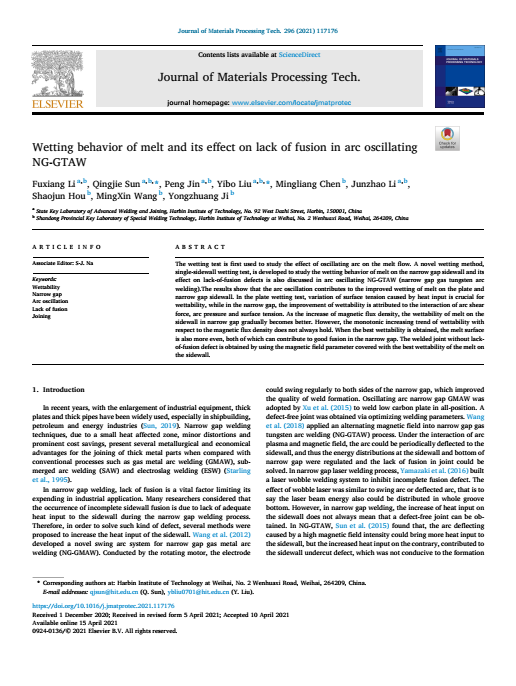The wetting test is first used to study the effect of oscillating arc on the melt flow. A novel wetting method, single-sidewall wetting test, is developed to study the wetting behavior of melt on the narrow gap sidewall and its effect on lack-of-fusion defects is also discussed in arc oscillating NG-GTAW (narrow gap gas tungsten arc welding).The results show that the arc oscillation contributes to the improved wetting of melt on the plate and narrow gap sidewall. In the plate wetting test, variation of surface tension caused by heat input is crucial for wettability, while in the narrow gap, the improvement of wettability is attributed to the interaction of arc shear force, arc pressure and surface tension. As the increase of magnetic flux density, the wettability of melt on the sidewall in narrow gap gradually becomes better. However, the monotonic increasing trend of wettability with respect to the magnetic flux density does not always hold. When the best wettability is obtained, the melt surface is also more even, both of which can contribute to good fusion in the narrow gap. The welded joint without lack-of-fusion defect is obtained by using the magnetic field parameter covered with the best wettability of the melt on the sidewall.
